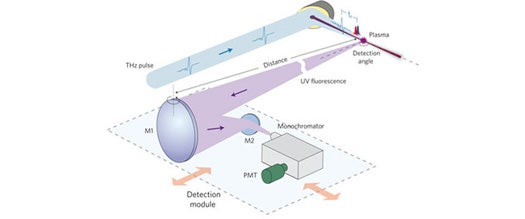Remote Terahertz Scanners Could See What’s in Your Pockets from Miles Away
If those new airport X-ray scanners offend your modest sensibilities, you may not want to read this. A new terahertz...

If those new airport X-ray scanners offend your modest sensibilities, you may not want to read this. A new terahertz remote sensor may soon be able to see through walls, packaging materials, and even clothing from thousands of feet away, identifying materials contained inside through their unique spectral signatures.
Terahertz waves exist in the part of the spectrum between infrared and microwave light, but they were largely thought to be a dead end for remote sensing tech because they are absorbed and degraded by moisture in the air, making them highly unreliable at distances beyond just a few inches.
But researchers at Rensselaer Polytechnic Institute decided that if terahertz waves themselves won’t work across distances, they would use a laser to excite terahertz radiation at faraway targets. The detector works by zeroing two lasers at different frequencies on a target. This causes the materials the laser hits to emit terahertz radiation, which in turn emits a fluorescence that is unique to that material as well as detectable from far away.
That means that in theory, as long as there is good line of sight, a terahertz detector could check your pockets at really distant ranges – perhaps even miles away – though in the lab the researchers only demonstrated the technology at 67 feet (simply because that was as much space as they had). The researchers are currently cataloging the unique signatures of various materials so the detector can tell your car keys from your makeup compact from your Glock.
But privacy advocates, you may return to your seats. Terahertz waves are actually much lower in energy than X-rays, so while they can peek inside your pockets from a distance, they are actually far less invasive than those scanners that undress you as you walk through. And since moisture kills those terahertz signals, nothing inside the body (like a medical implant) is detectable.
Besides, the sensors won’t be showing up in airports in the immediate future anyhow. Though the Department of Homeland Security did have a hand in paying for the research, the DoD will likely first deploy the tech in combat zones to help soldiers detect roadside bombs and maintain a ring of security around bases or checkpoints.